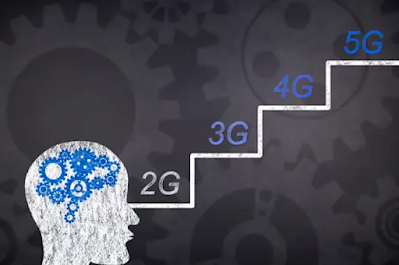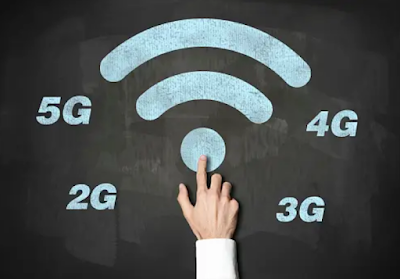Difference between 2G and 3G network technology
 |
| What is the basic difference between 1G and 2G technology? |
The early integration of communication networks (1G) started with mobile telephony in which many features are not available in existing networks. The concentration of SIM telephones started with GSM (2G) and now we are at the doorstep to pass 4G. 5G, 2.75G, 3G, and 3.5G.
2G (GSM) network technology
The Global System for Mobile Communications, also known as 2G, is the first attempt to stop the modern concept of digital phones. The technology level was first introduced in 1991 and has grown to over 200 million users in 1998. This level has become more popular among people as voice transmission has become more successful and technology has advanced, GSM phones are available.
According to the specifications GSM handsets contain an identifier that is used to subscribe to the network and it is called SIM (Subscriber Identification Module). The multiple access technology used is a hybrid version of FDMA (Frequency Division Multiple Access) and TDMA (Time Division Multiple Access) to increase the number of subscribers in a given cell. Also, the cell concept is populated and an area is divided into small hexagonal areas known as cells to cover the air interface and each using 3 grass area antennas. Covers.what are 2g and 3g network?
The GSM radio interface has a data rate of 270 Kbps and the voice channel bandwidth is more than 200 Kbps which is enough to carry voice data. The spectrum allocation for GSM consists of 14 bands that are heavily used by the above mobile networks such as GSM 850, GSM 900, GSM 1800, and GSM 1900. There are. Even uplinks and drop links use different bands for communication and have different distances. 45 MHz for the GSM 900 band. So the uplander frequencies are 890-915 MHz and the dial-link frequency band is 935-960 MHz and each band is divided into 200 kHz channels.
Spectrum usage for GSM is GGS 900 and GSM 1800 (DCS) used in Asia, Europe etc., and GSM 850 and GSS 1900 are mainly used in the United States of America and Canada. happens.
3G network technology
As mobile networks grow voice transmission is not the only facility provided by the network. Also, in a mobile environment, there is increased support for applications like video calling, high data rates, streaming video and audio, video conferencing, and multimedia applications. There are two collaborations ie 3GPP and 3GPP2 later is a standard for 3G based on CDMA technology.
According to ITU (International Telecommunication Union) recommended by 3GPP must be called a 3G network. Data transfer rate of 144Kbps minimum (link below) 384 Kbps to transmit handset. 2 Mbps in indoor conditions for paid traffic and indoor links. Demand bandwidth and 2 Mbps broadband Internet access are also specified by 3GPP.2g, and 3g cellular network uses
Each user has full access to the bandwidth of the air interface thanks to CDMA, a multiple access mechanism based on a hash random code. For 3G networks and bandwidth 1, both CDMA2000 and CDMA2000 1x EV-DO are deployed in different parts of the world. The WDM bandwidth for CDMA2000 is 5 MHz and 25 MHz.
Differences between 2G and 3G network technologies
1. GSM's 2G specification enables voice-only mobile communications, while 3G offers mobile users better services than voice-only mobile communications. 2. For multiple access technology, GSM employs TDMA and FDMA, while 3G uses CDMA variants such as CDMA technology, CDM2000, and CDA2000 1X EV-DO. 3. 3G air interface data rate is at least 2Mbps for stationary mobile and 384kbps in Linux, while the GSM air interface data rate is 270Kbps. 4. In 2G, the A5 modification technique is used, while in 3G, the authentication mechanism uses the more secure KASUMI encryption.
5 For speech transmission, 2G uses a channel bandwidth of 200 kHz, while 3G uses a channel of 1.25 MHz.







0 Comments